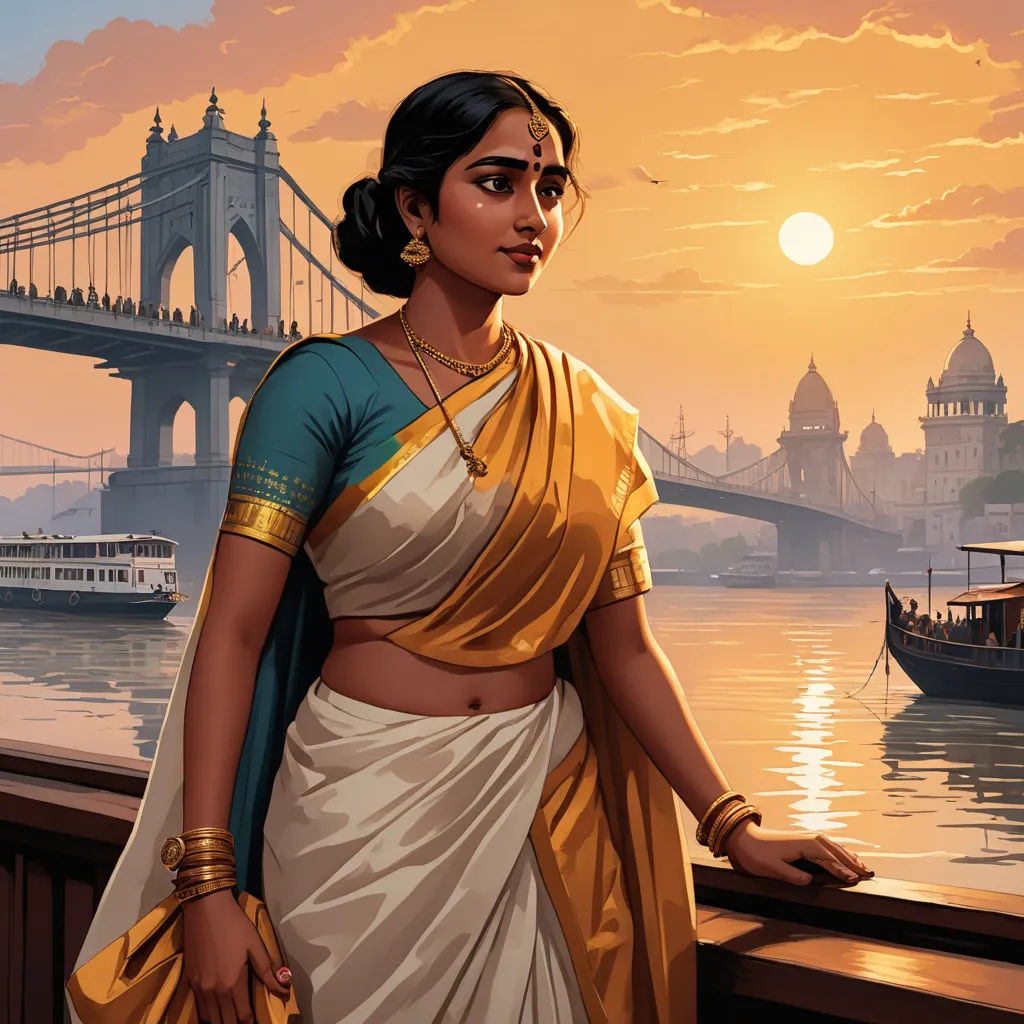
The Legacy of Rani Rashmoni
By sushmitashwg95

07 Mar, 2024
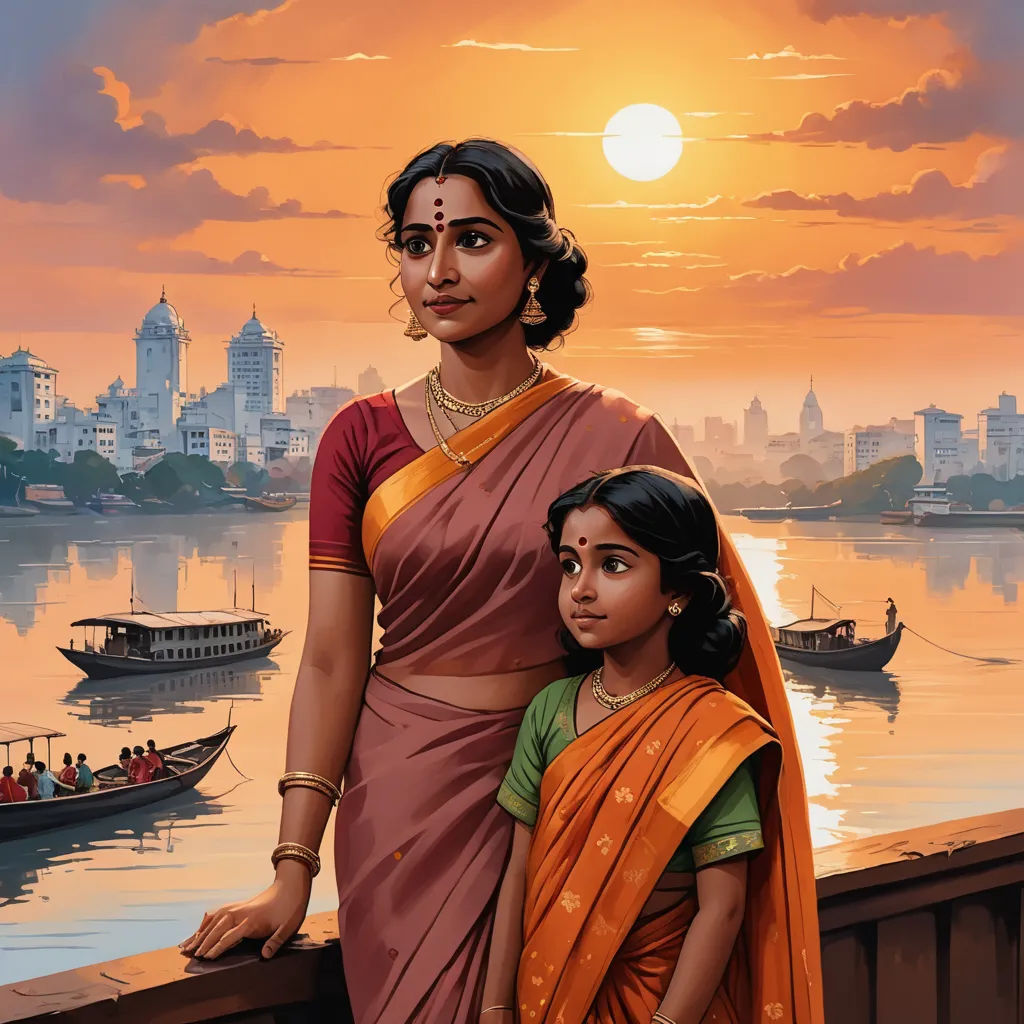
Nandini, with her daughter Titash by her side, boarded the river cruise ferry in Kolkata. The sun was setting, casting a warm glow on the bustling city, as they set sail on the Hooghly River.

As the ferry moved, Titash looked around with wide eyes. She was fascinated by the river, the ghats, and the buildings on the riverbanks. Nandini smiled, watching her daughter's awe.

As they continued their journey, a man, Professor Rituparna Dutt, approached them. He greeted Nandini and Titash, introducing himself as a history professor on a research visit.
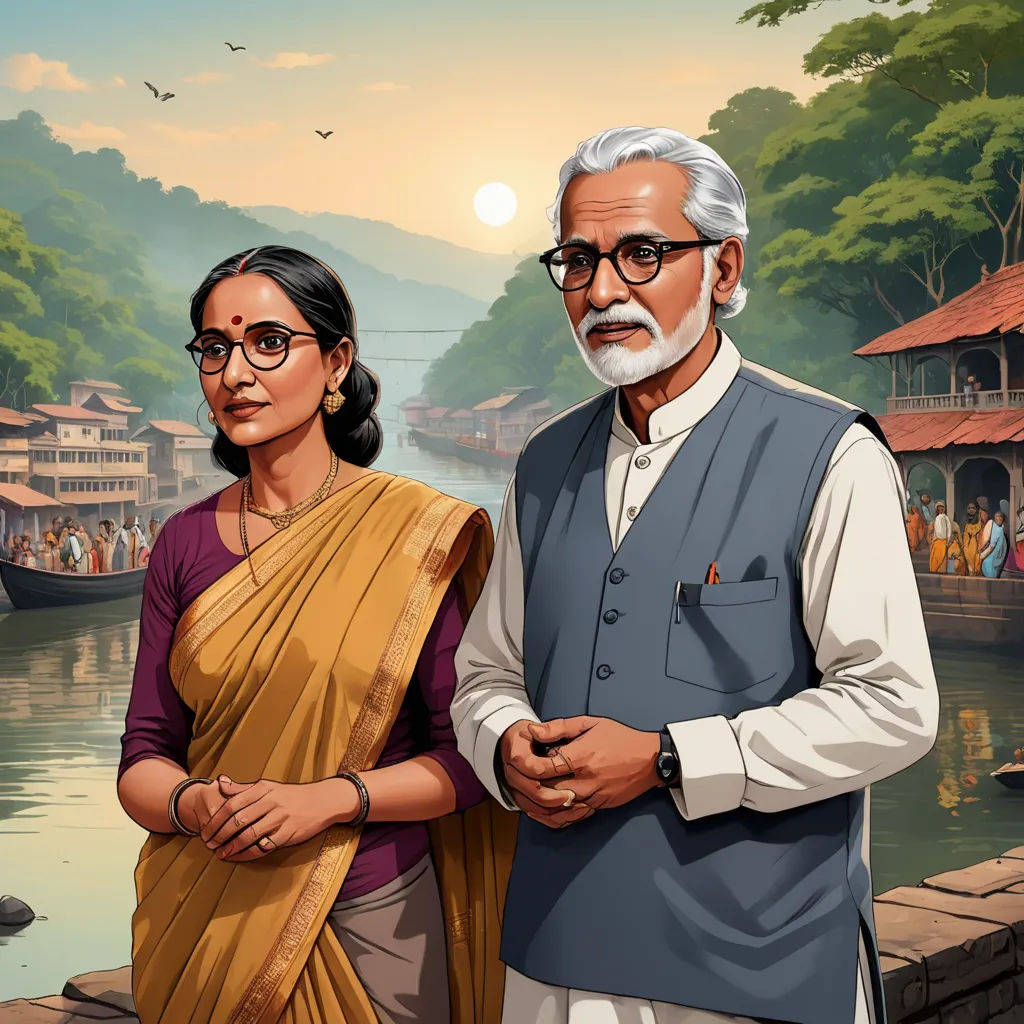
Professor Dutt asked if he could join them. With Nandini's approval, he started narrating the story of Rani Rashmoni Das who had constructed the ghat they were passing.
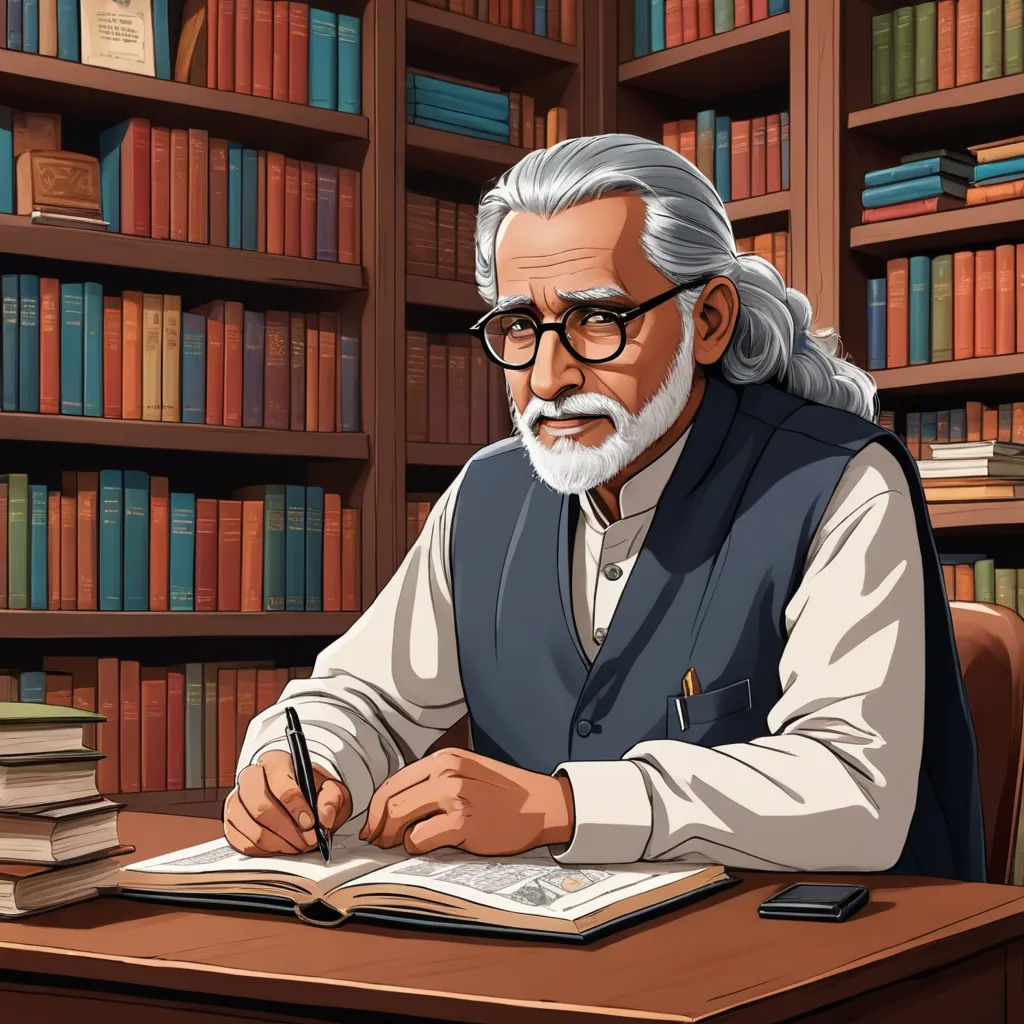
As Professor Dutt delved into the history, Titash listened with rapt attention. The professor explained how Rani Rashmoni was a strong woman who stood up for the rights of the poor fishing communities.

He detailed Rani Rashmoni's struggle against the British Raj in the 1840s, defending the rights of her people to fish in the river. Nandini was deeply moved by the story.
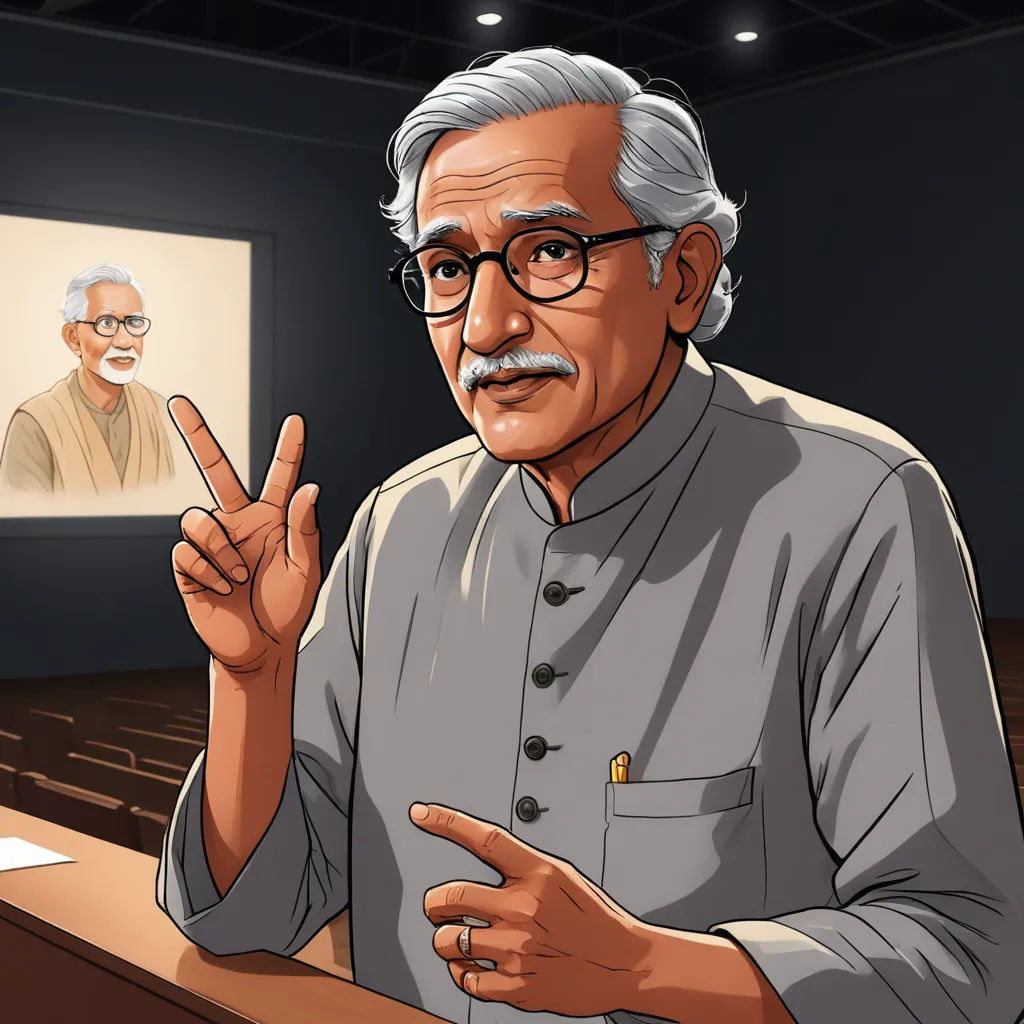
Professor Dutt spoke of how Rani Rashmoni's courage and conviction made her a local hero. He emphasized how she used her wealth and influence for the betterment of society.
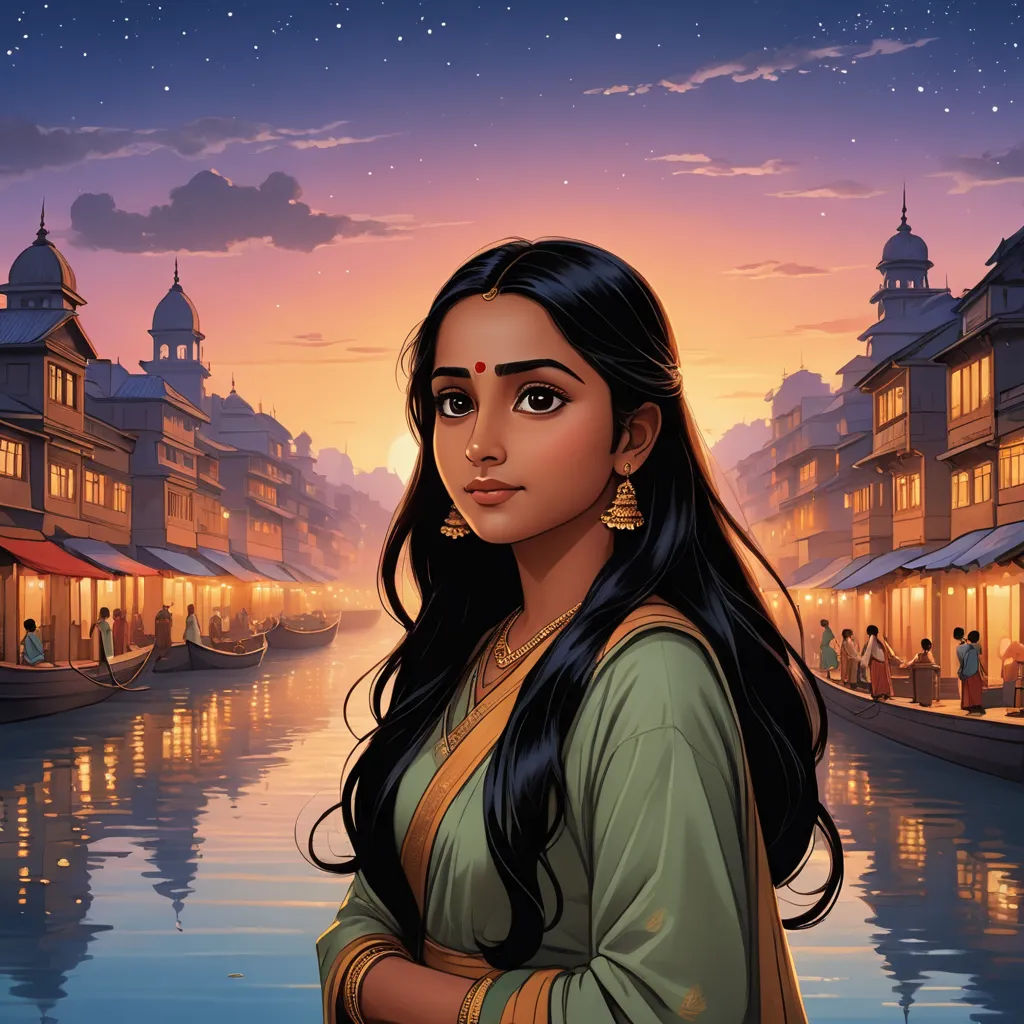
As the evening turned into night, the lights of the city reflected off the river, adding to the mystique of the tale. Titash was mesmerized by the bravery and determination of Rani Rashmoni.
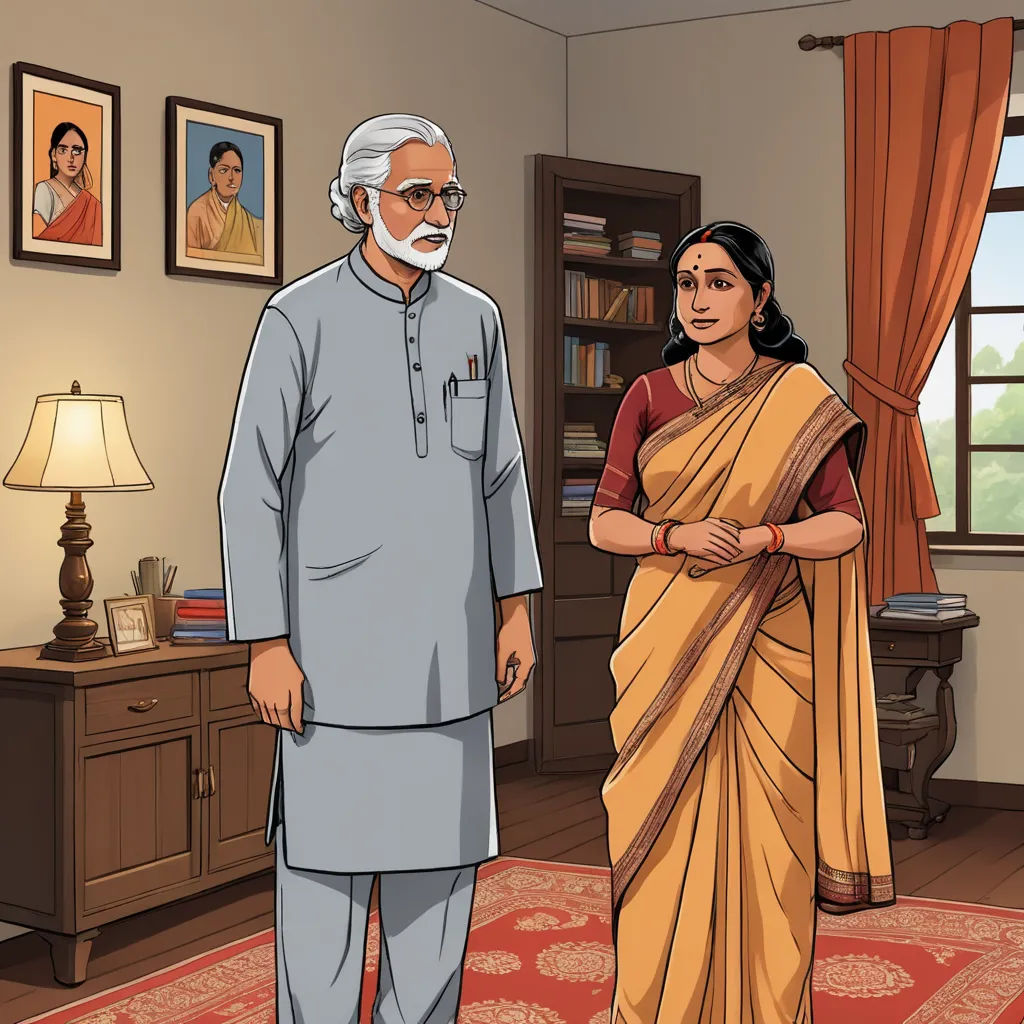
Professor Dutt concluded the story, leaving both Nandini and Titash in awe of the legacy of Rani Rashmoni. They thanked him for sharing such an inspiring piece of history.
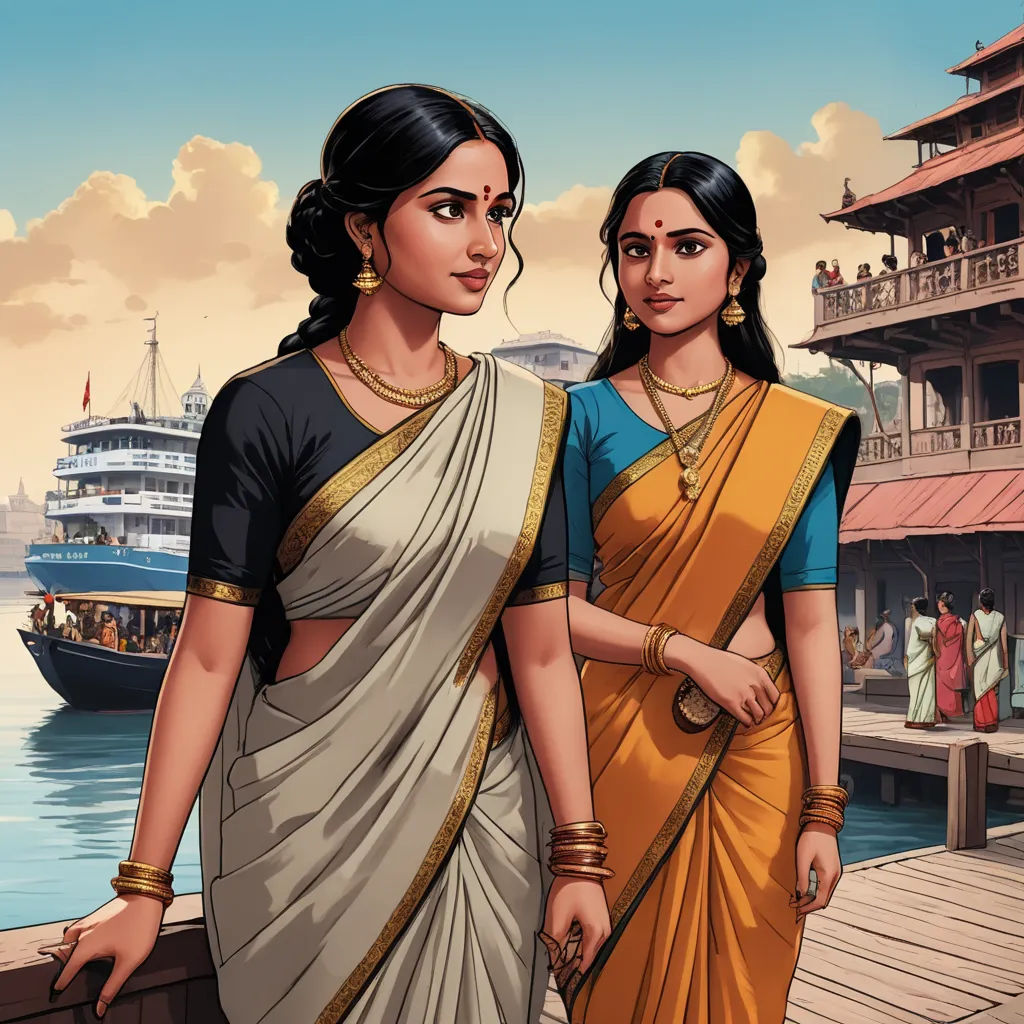
As the ferry docked, Nandini and Titash disembarked with a newfound admiration for their city and its history. The story of Rani Rashmoni had touched their hearts.

That night, as Nandini tucked Titash into bed, the young girl asked about other strong women in their culture. Nandini smiled, realizing the impact the story had made.
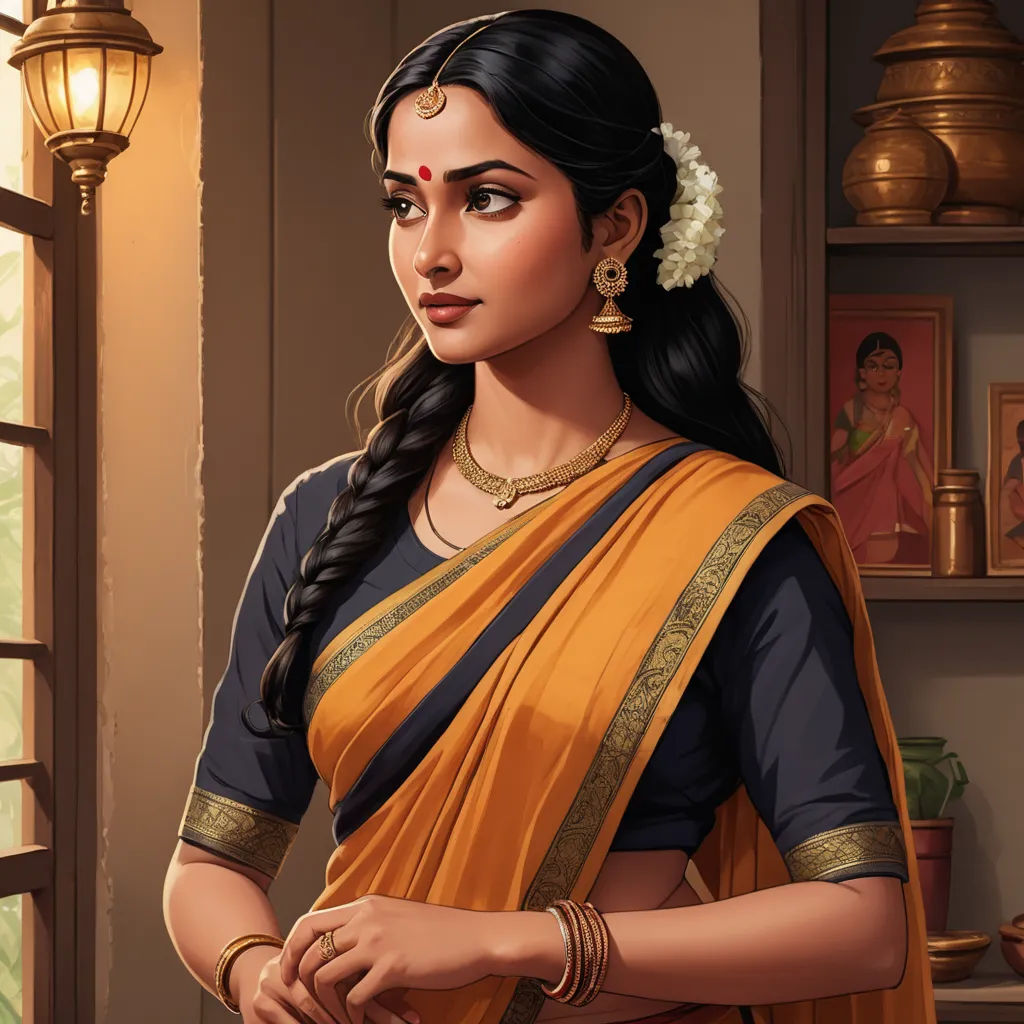
Over the next few days, Nandini told Titash more stories about brave women from their culture. Each story was a testament to the strength and resilience of women.

As days passed, Titash's fascination with history grew. She read books, visited museums, and even started a project at school about Rani Rashmoni and her contributions.
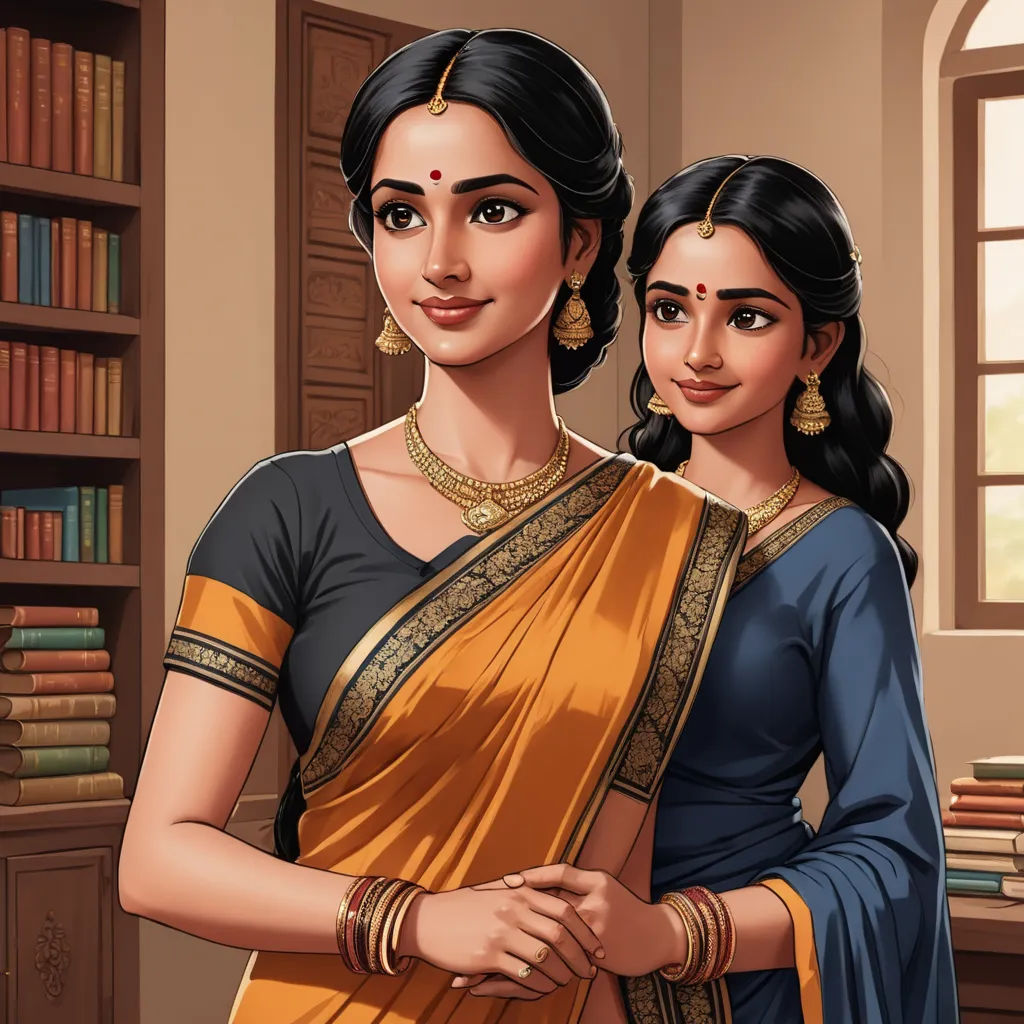
Nandini was proud of her daughter. She saw Titash's growing interest in history and her empathy for those who had fought for justice as signs of maturity and intelligence.

Months later, they took another river cruise. As they passed the same ghat, Titash narrated Rani Rashmoni's story to a group of tourists, just like Professor Dutt had done.
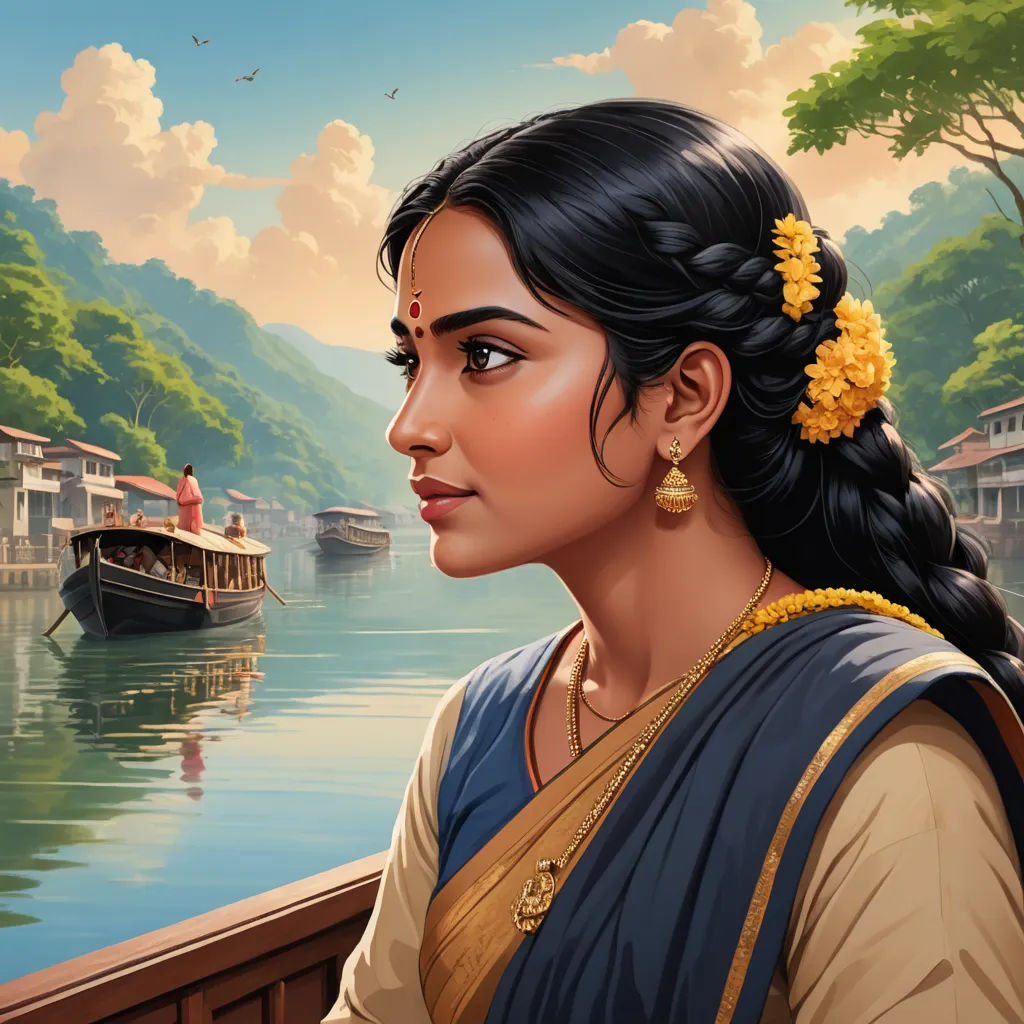
Nandini watched Titash with pride. The river cruise had turned into a journey of knowledge and inspiration for both of them, all thanks to the legacy of Rani Rashmoni.
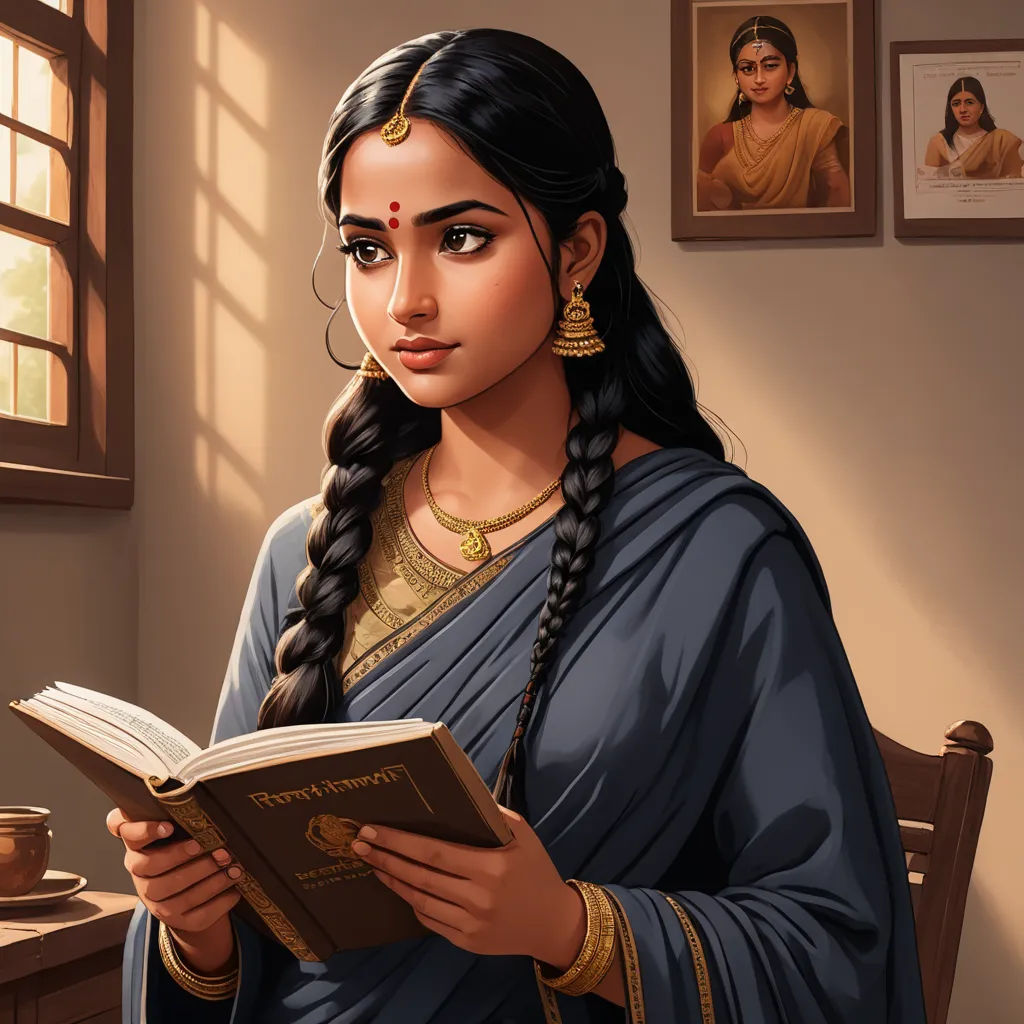
The story of Rani Rashmoni Das had become a beacon of inspiration for Titash. Her story continued to resonate with the young girl, igniting a passion for history and social justice.
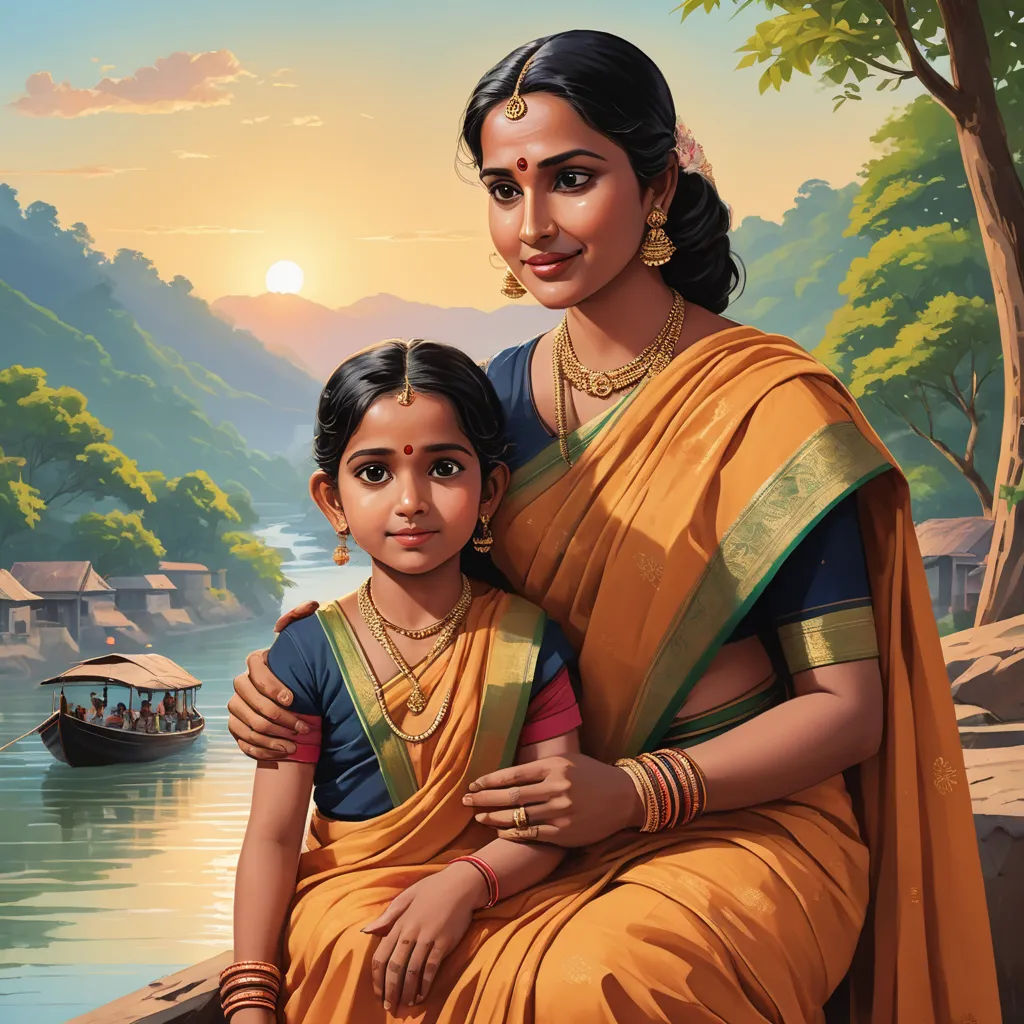
For Nandini, it was a reminder of the power of stories. How one story on a river cruise had sparked a desire in her daughter to learn, to understand, and to share the tales of their culture.
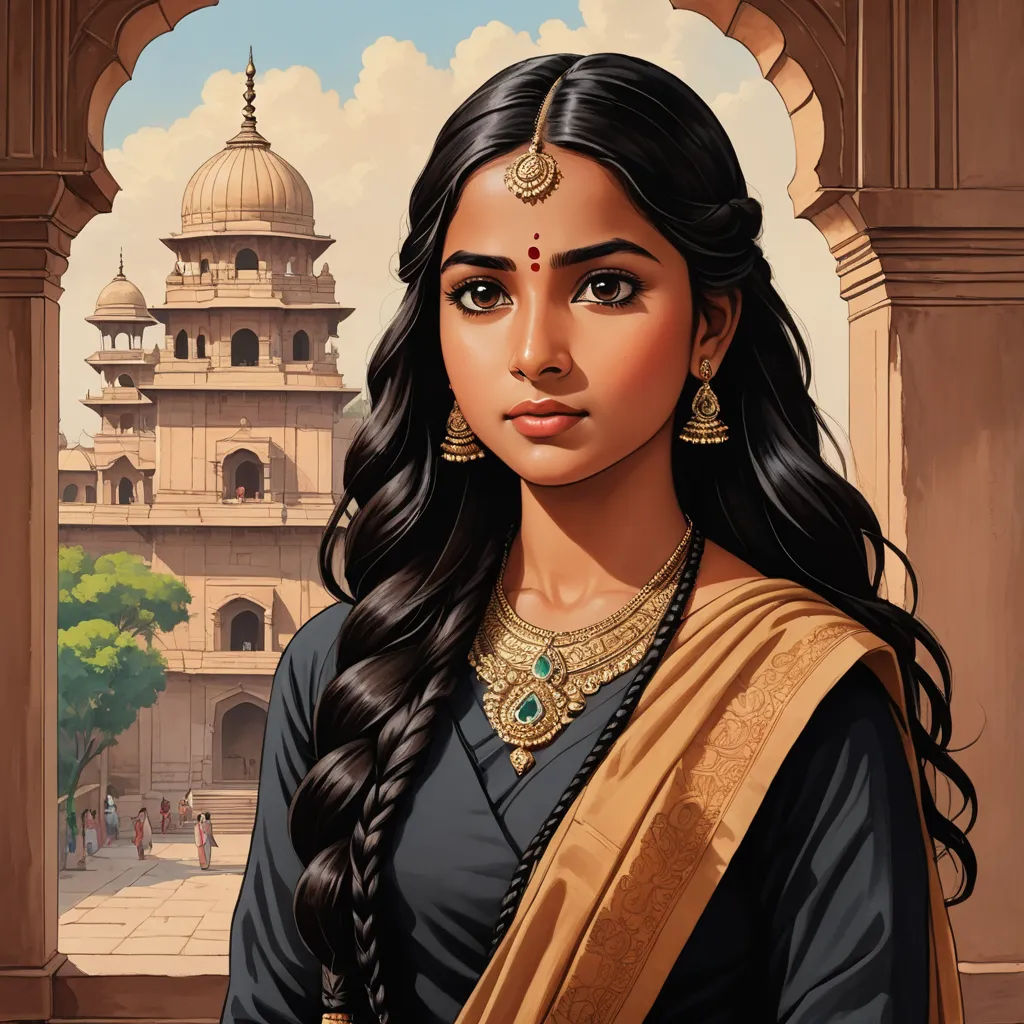
The legacy of Rani Rashmoni Das was not just in her deeds, but also in how her story continued to inspire generations. It was a testament to the enduring power of courage and conviction.
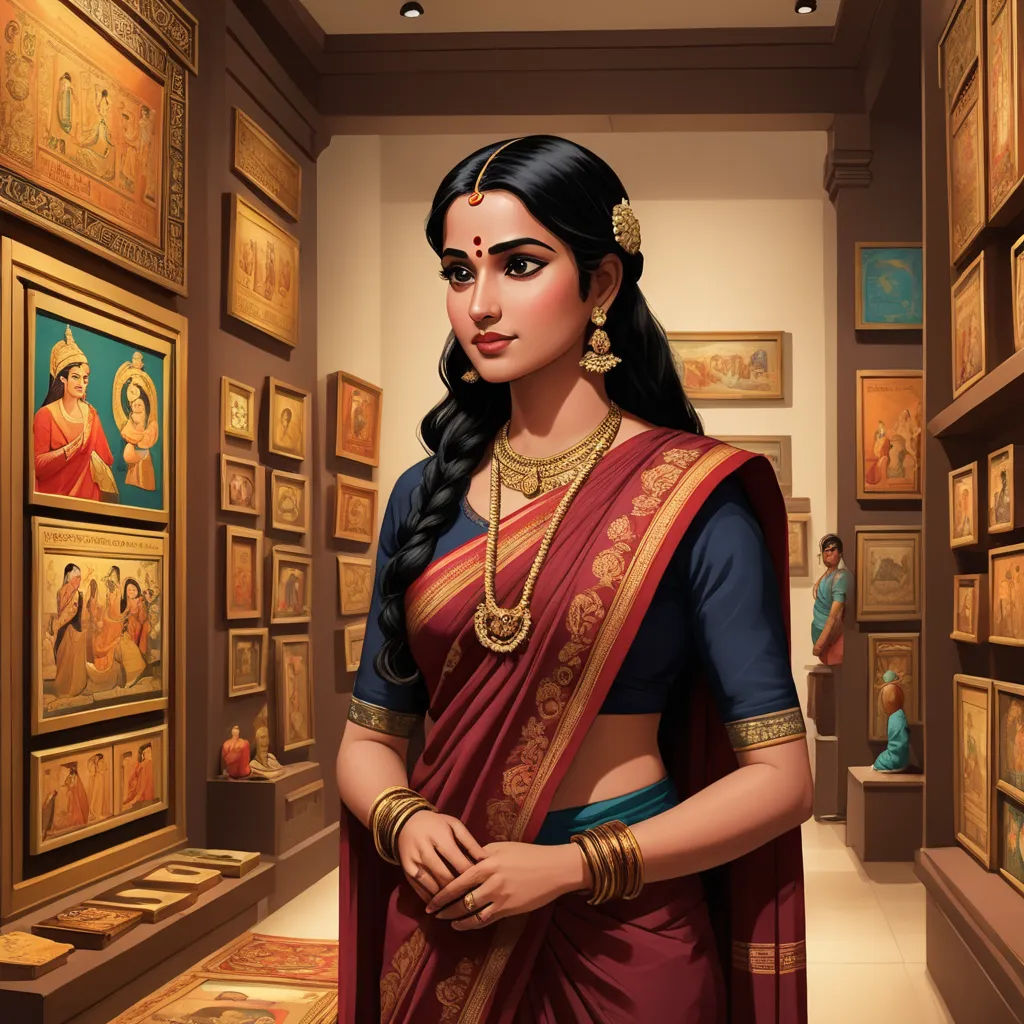
Nandini and Titash's journey was a beautiful testament to how history can inspire and educate. And they hoped to continue learning and sharing these stories, carrying forward the legacy of their culture.